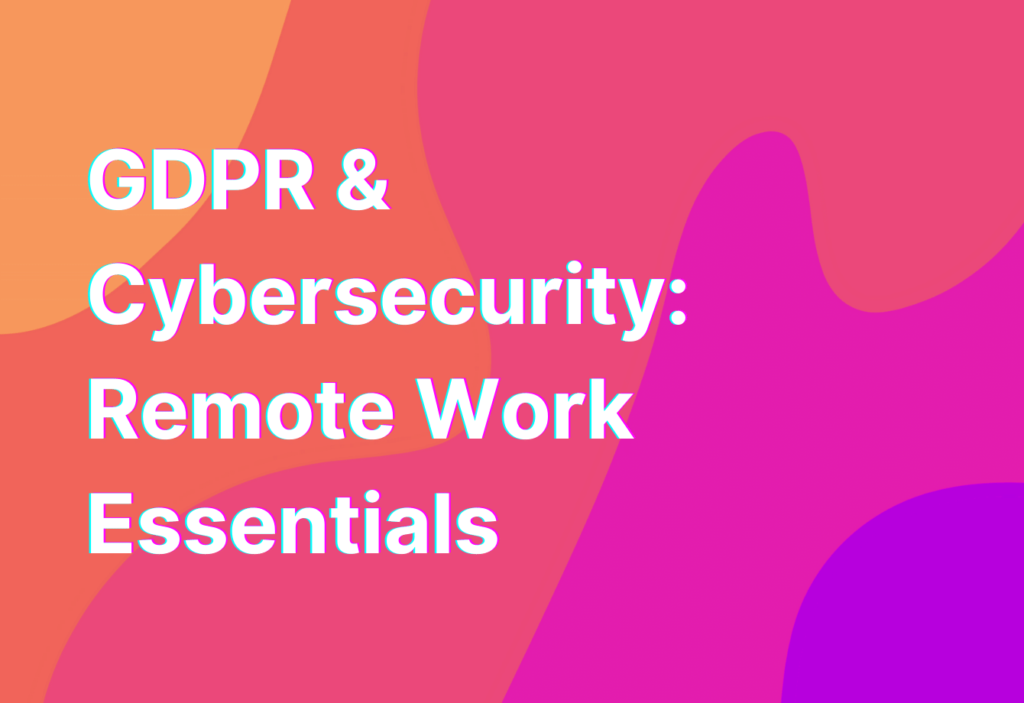GDPR & Cybersecurity: Remote Work Essentials
Hey there, remote work enthusiasts! It’s Ashley here, your friendly remote work advocate with 10 years of experience in the tech industry. Today, I want to talk about a topic that is crucial for anyone working remotely: GDPR and cybersecurity. So grab your favorite cup of coffee and let’s dive in!
What is GDPR?
If you’ve been working remotely for a while, you’ve probably heard of GDPR. But for those who are new to the remote work scene, let me give you a quick rundown. GDPR stands for General Data Protection Regulation, and it’s a set of regulations that aim to protect the personal data and privacy of individuals within the European Union (EU).
Now, you might be wondering why GDPR is relevant to remote work. Well, as a remote worker, you may handle sensitive data from clients or customers who are based in the EU. And if that’s the case, you need to ensure that you’re following GDPR guidelines to protect that data.
Why is Cybersecurity Important for Remote Workers?
When you work remotely, you’re often using various online tools and platforms to communicate, collaborate, and store data. While these tools make remote work more convenient, they also come with their own set of cybersecurity risks.
Remote workers are often targeted by cybercriminals who are looking to exploit vulnerabilities in their online activities. This can include phishing attacks, malware, or even data breaches. That’s why it’s crucial for remote workers to prioritize cybersecurity and take necessary precautions to protect their data.
Essential Tips for GDPR Compliance and Cybersecurity
Now that we understand the importance of GDPR and cybersecurity, let’s dive into some essential tips to help you stay compliant and secure while working remotely:
- Use a VPN: A Virtual Private Network (VPN) encrypts your internet connection, making it more secure and protecting your data from prying eyes. It’s a must-have tool for remote workers.
- Keep your software up to date: Software updates often include security patches that fix vulnerabilities. Make sure to regularly update your operating system, apps, and antivirus software.
- Use strong, unique passwords: Avoid using the same password for multiple accounts. Instead, use a password manager to generate and store strong, unique passwords for each of your accounts.
- Enable two-factor authentication (2FA): 2FA adds an extra layer of security by requiring a second form of verification, such as a code sent to your phone, in addition to your password.
- Be cautious of phishing attempts: Phishing emails and messages are designed to trick you into revealing sensitive information. Always double-check the sender’s email address and be wary of suspicious links or attachments.
These are just a few essential tips to get you started on your journey to GDPR compliance and cybersecurity. Remember, it’s an ongoing process, and staying vigilant is key!
Wrapping Up
As remote workers, it’s our responsibility to prioritize GDPR compliance and cybersecurity. By following the tips mentioned above and staying informed about the latest trends and best practices, we can create a safe and secure remote work environment.
For more information on cybersecurity and remote work, check out our Honeypot Cybersecurity page. Stay safe and happy remote working!


